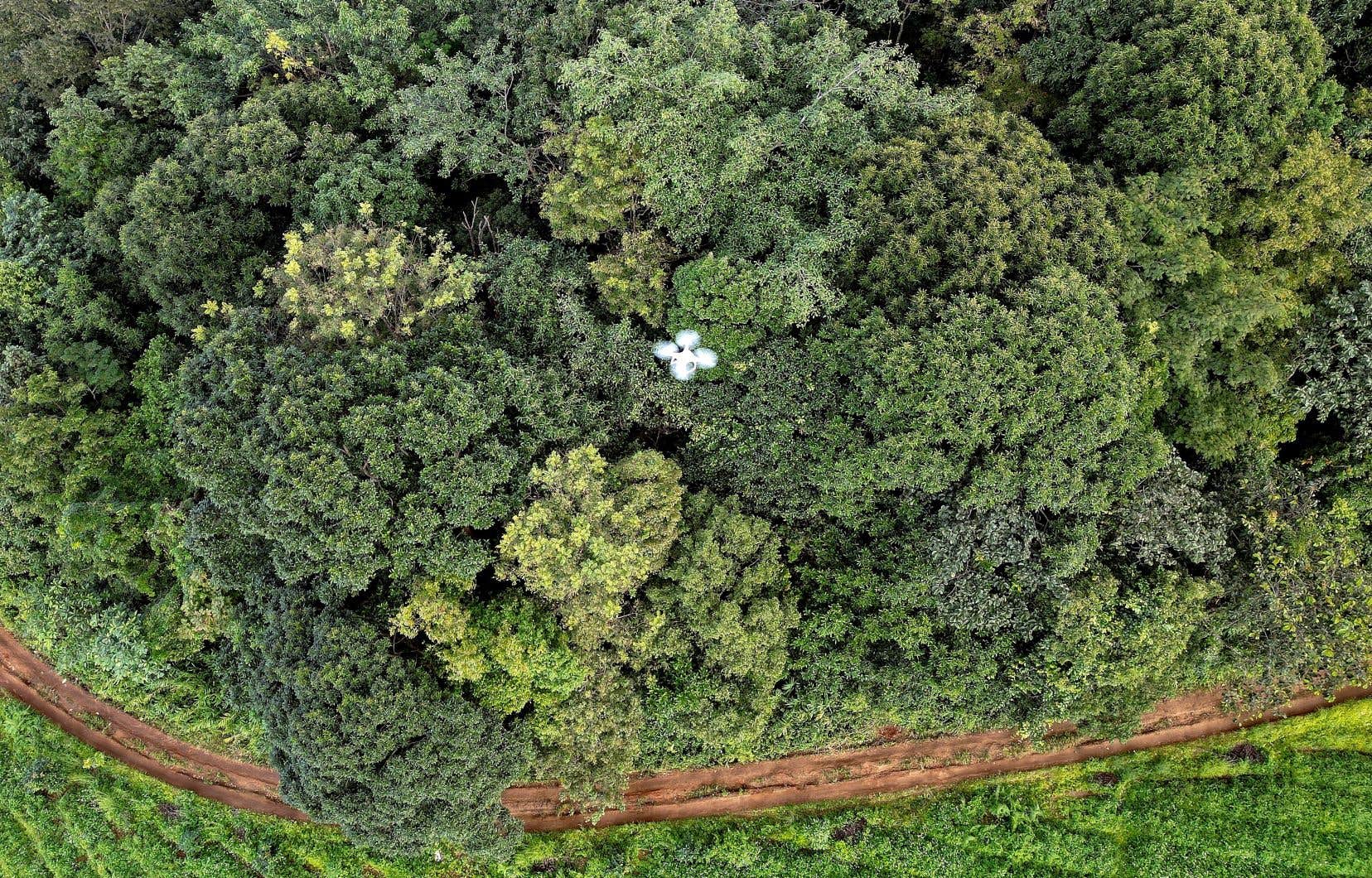On a hill near Chiang Mai in northern Thailand, a drone fires up its propellers and rises above the forest to better understand its role in the fight against climate change.
The device methodically flies over the thick jungle, transmitting hundreds of photos to the ground which will then be assembled in 3D.
This technology allows scientists to quickly get an accurate picture of the health of the forest and estimate the amount of carbon it is absorbing. Trees are indeed important CO sensors2the gas that contributes the most to global warming.
Their role is therefore crucial. However, since 2000, forests have declined by 12% worldwide due to deforestation, according to the World Forest Observatory.
But the size of the surface is not the only criterion. The amount of CO2 absorbed by the forest varies depending on the species and age of the trees.
Define good practices
Without a drone, “we would have to go through the entire forest with a pole and a five-meter rope, and take measurements on every tree,” explains Stephen Elliott, director of a forest restoration research unit (FORRU) at the Chiang Mai University.
A titanic task. And “20 students treading the ground with measuring tapes and poles… that’s not good for the basement” either.
Thanks to the drone, “you no longer set foot in the forest”.
Three measurements are necessary: height, circumference and density of the wood.
The machine follows a pre-programmed trajectory, while on the ground with binoculars, the team watches for possible obstacles like a bird.
“We collect data or capture images every three seconds,” explains Worayut Takaew, the drone pilot. The overlapping images are then converted into a 3D model that can be viewed from different angles. »
The goal of Stephen Elliott and his team is not to reforest on a large scale, but to define good practices: planting native species, encouraging the return of animals that bring seeds from other species and working with residents .
Started several decades ago, the replanting of the plot is a success which is seen spectacularly on the 3D images, in comparison with the neighboring plots, left intact and sparse.
According to Stephen Elliott, whose team also calculates the carbon stored by the leaf mat and humus, the plot stores as much carbon as a primitive forest.
The drone has a major flaw, it cannot clearly see what is happening under the treetops. To do this, scientists use a lidar as a tool, that is to say a laser remote sensing device, which makes it possible to scan the entire forest at human height in high definition.
“It is possible to enter the forest and reconstruct the shape and size of each tree,” explains Emmanuel Paradis, French researcher at the Research Institute for Development (IRD). He is leading a multi-year project to produce the most accurate analysis yet of how much carbon Thailand’s forests can store.
Precise measurements
Five types of forest will be mapped, including plots reforested by Stephen Elliott’s teams, using lidar radars mounted on drones.
“The objective is to obtain an estimate of the carbon storage capacity of forests across Thailand,” explains Emmanuel Paradis. A lot of people, and I somewhat agree, think that these estimates are not precise enough,” he says.
“Overly optimistic estimates can give too much hope and too much optimism about the potential of forests to store carbon,” he warned.
Urgency is driving rapid developments, including next year’s satellite launch Biomass from the European Space Agency, designed to monitor carbon stocks in forests.
“Technology is evolving, satellites are becoming more and more precise… and statistical technologies are becoming more and more precise,” says the researcher.
